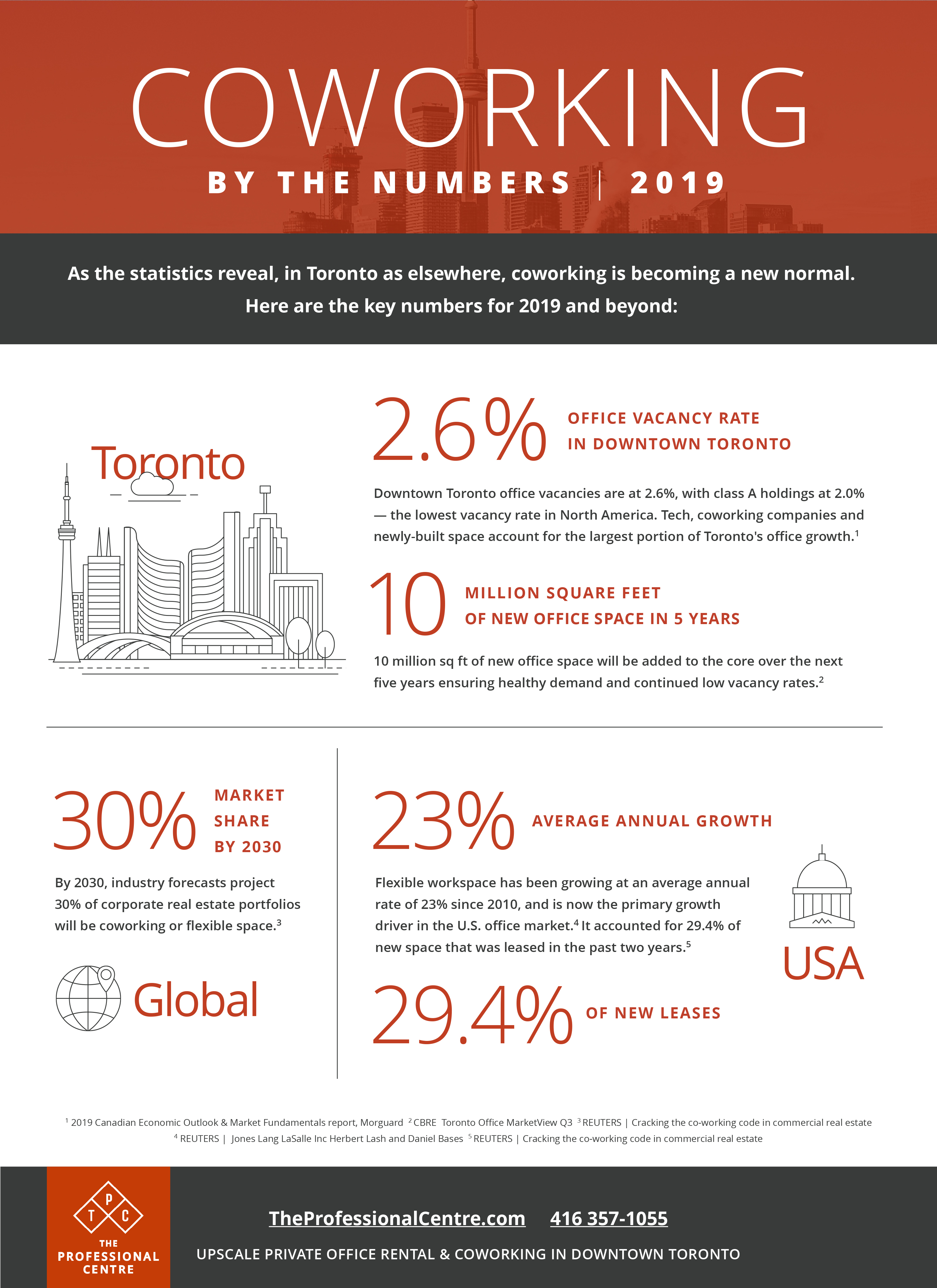2019 Coworking Statistics for Toronto

In relatively short order, coworking has essentially transformed the way people work. By providing choice, flexibility and affordability, it has enabled millions to start their own businesses, grow an existing company or simply work on their own terms. In fact, coworking has fundamentally disrupted the commercial real estate sector globally. Predictably then, in light of Toronto’s historically low downtown office vacancy rate, this global phenomenon is emerging as the ideal workplace solution locally.
Coworking has become the preferred workplace for a cohort that values agility and demands an enhanced work experience as they define it. By the end of 2018, approximately 1.7 million people worldwide had utilized a coworking space. As traditional commercial real estate options — with their inflexible leasing arrangements and sky-high rents — are proving ill-suited to meet the shifting demands of today’s working community, coworking is a trend that is definitely forecast to grow.
As the statistics reveal, in Toronto as elsewhere, coworking is the new normal. Here are the key numbers for 2019 and beyond…

2.6%
VACANCY RATE, THE LOWEST IN NORTH AMERICA
As 2019 opens, downtown Toronto office vacancies are at a 20-year low of 2.6%, with class A holdings at an even tighter 2.0%. The city has claimed the lowest downtown office vacancy rate in North America for five consecutive quarters.
Tech, coworking companies and a very limited supply of newly-constructed space account for the largest portion of Toronto’s current office growth. Often they go hand in hand as tech companies are at the forefront of the coworking adoption trend.
For the foreseeable future, low vacancy levels will continue to present an obstacle for tenants looking to expand, particularly downtown, as they will have very little leverage negotiating conventional rents/leases. These conditions are giving rise to the growing appeal of coworking — making Toronto a prime location and incubator for shared workplace adoption and innovation.

10 million
SQUARE FEET OF NEW OFFICE SPACE
Downtown Toronto is projected to add a modest 10 million square feet of new office space over the next five years, essentially ensuring healthy demand will continue to support low vacancy rates. It also provides an incentive for continued development of alternative workplace opportunities.

30%
MARKET SHARE
By 2030, industry forecasts project 30% of corporate real estate portfolios (globally) will be coworking or flexible space.

23%
ANNUAL GROWTH
Flexible workspace, including coworking, has been growing at an average annual rate of 23% since 2010 and is now the primary growth driver in the U.S. office market.

29.4%
OF NEW LEASES
Confirming its advance into the mainstream of commercial real estate, coworking and other flexible workspace formats accounted for 18.1 million square feet, or 29.4 percent of new space that was leased in the United States over the past two years.
At a time when work can be done anywhere, anytime, 24/7 and even globally, the focus has shifted from monitoring output to measuring effectiveness. To that end, today’s ideal office space is a flexible environment that is supported by the latest technology and allows workers to connect and collaborate with like-minded professionals in accommodating shared spaces. As the concept of work continues to evolve, coworking is a chance to be part of something significant.
Want to share or download this information? Use our sharable graphic below.
Download PDF of Coworking by the numbers
If you’d like more information on how our shared office space can work for your clients, call The Professional Centre today at 416-367-1055 or contact us.





